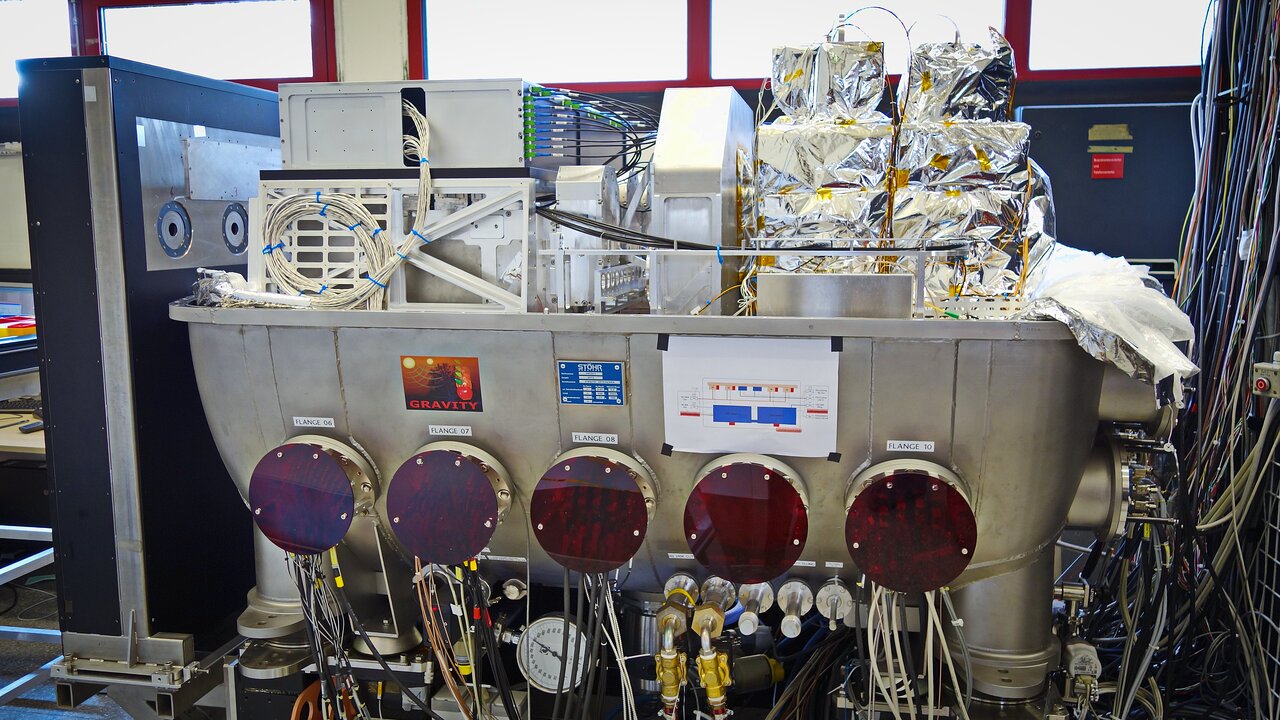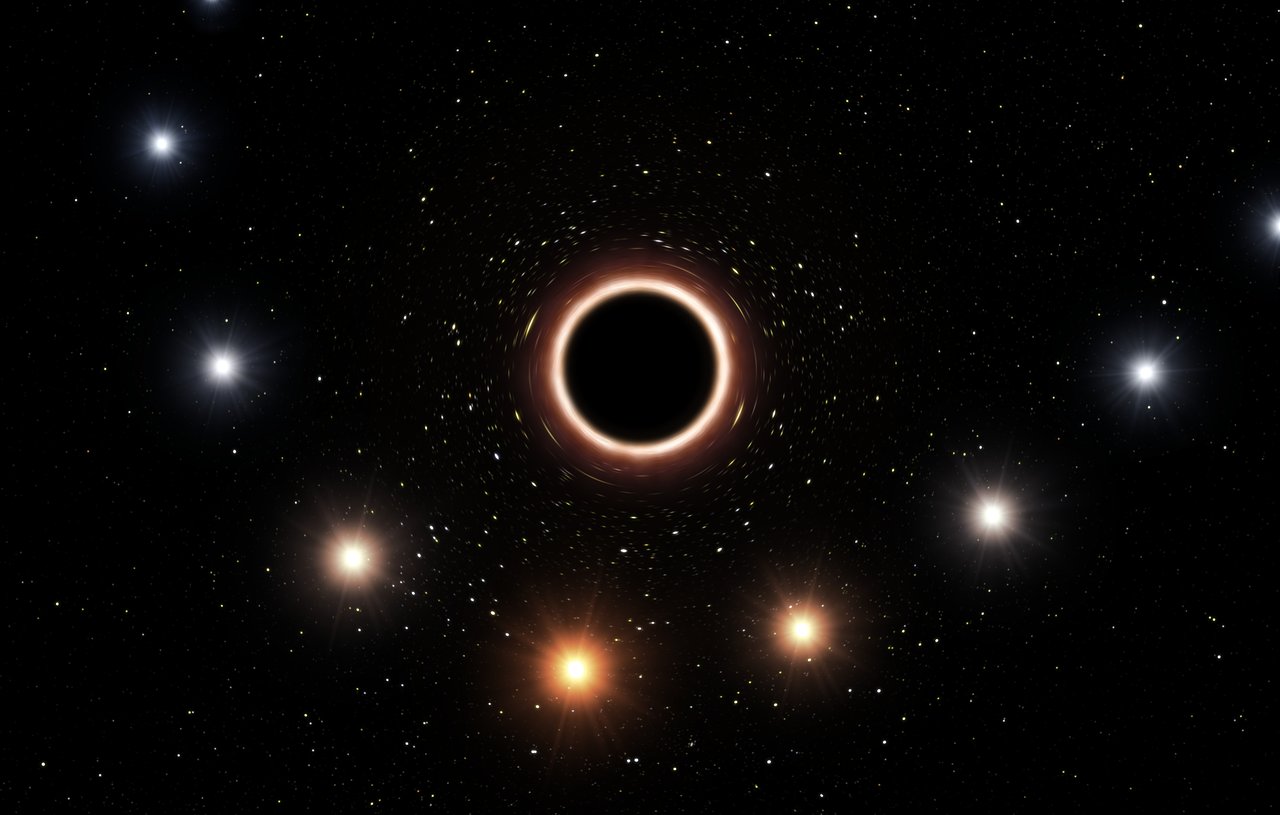GRAVITY

“GRAVITY is born from the desire to observe very small details of faint objects, including those at the centre of galaxies. With its high sensitivity and accuracy, GRAVITY can reveal a whole new world of planets, stars and galactic centres that were previously out of reach because they were too faint for previous instruments,” explains Xavier Haubois, ESO astronomer at the VLTI.
GRAVITY is an interferometer that combines the light of four VLT telescopes (either the four Unit Telescopes or the four Auxiliary Telescopes), each assisted by adaptive optics. GRAVITY includes its own fringe tracker, which allows it to further correct for effects introduced by atmospheric turbulence. The instrument provides imaging with four-milliarcsecond resolution, and can measure the positions and movements of stars and other celestial objects with a precision of a few ten microarcseconds.
“By combining the light from different VLT telescopes, GRAVITY can achieve the spatial resolution of an equivalent telescope of up to 130 metres in diameter when looking in certain directions in the sky. But more than that, GRAVITY can be presented as two interferometers in one,” says Haubois. One part of GRAVITY makes sure the light is stabilised by observing a bright star. That star acts as a reference position in the sky, like an anchor for a boat. “Thanks to this stabilisation, the second part of the instrument can observe the object in question with long exposure times, more than a hundred times longer than what was possible before. This is how GRAVITY can observe faint targets,” explains Haubois.
One unique feature of GRAVITY is its astrometric capability, that is, its ability to measure distances on the sky with extremely high accuracy. “Measuring distances so precisely means that we can detect and follow the movements of objects that are very far away in just one night,” says Haubois.
To measure extremely small angles in the sky, equivalent to picking out a one-euro coin on the surface of the Moon, the distance travelled by the light within GRAVITY must be controlled in real-time with extremely high accuracy. This correction is done using state of the art technology such as lasers, stretchable optic fibers and integrated optics.
 This extremely high sensitivity allowed several groundbreaking observations. For example, measurements with GRAVITY confirmed the effects predicted by Einstein’s general theory of relativity for the motion of a star passing through the extreme gravitational field of the supermassive black hole in the centre of the Milky Way, Sgr A*.
This extremely high sensitivity allowed several groundbreaking observations. For example, measurements with GRAVITY confirmed the effects predicted by Einstein’s general theory of relativity for the motion of a star passing through the extreme gravitational field of the supermassive black hole in the centre of the Milky Way, Sgr A*.
Another achievement of GRAVITY was the first direct observation of an exoplanet using optical interferometry. The measurements allowed obtaining a spectrum of the planet, which revealed a complex exoplanetary atmosphere with clouds of iron and silicates swirling in a planet-wide storm.
Science highlights with GRAVITY
- ESO Telescope Sees Star Dance Around Supermassive Black Hole,Proves Einstein Right (eso2006)
- GRAVITY Instrument Breaks New Ground in Exoplanet Imaging (eso1905)
- Most Detailed Observations of Material Orbiting close to a Black Hole (eso1835)
- First Successful Test of Einstein’s General Relativity Near Supermassive Black Hole (eso1825)
GRAVITYThe authoritative technical specifications as offered for astronomical observations are available from the Science Operation page.
|